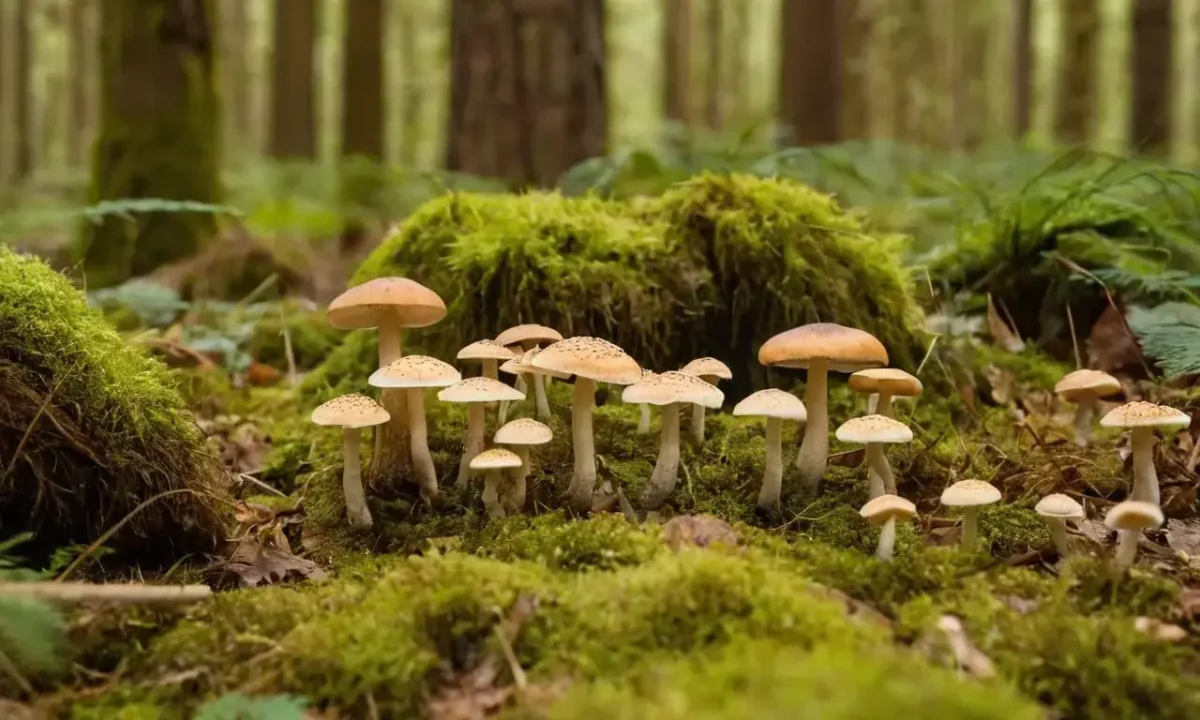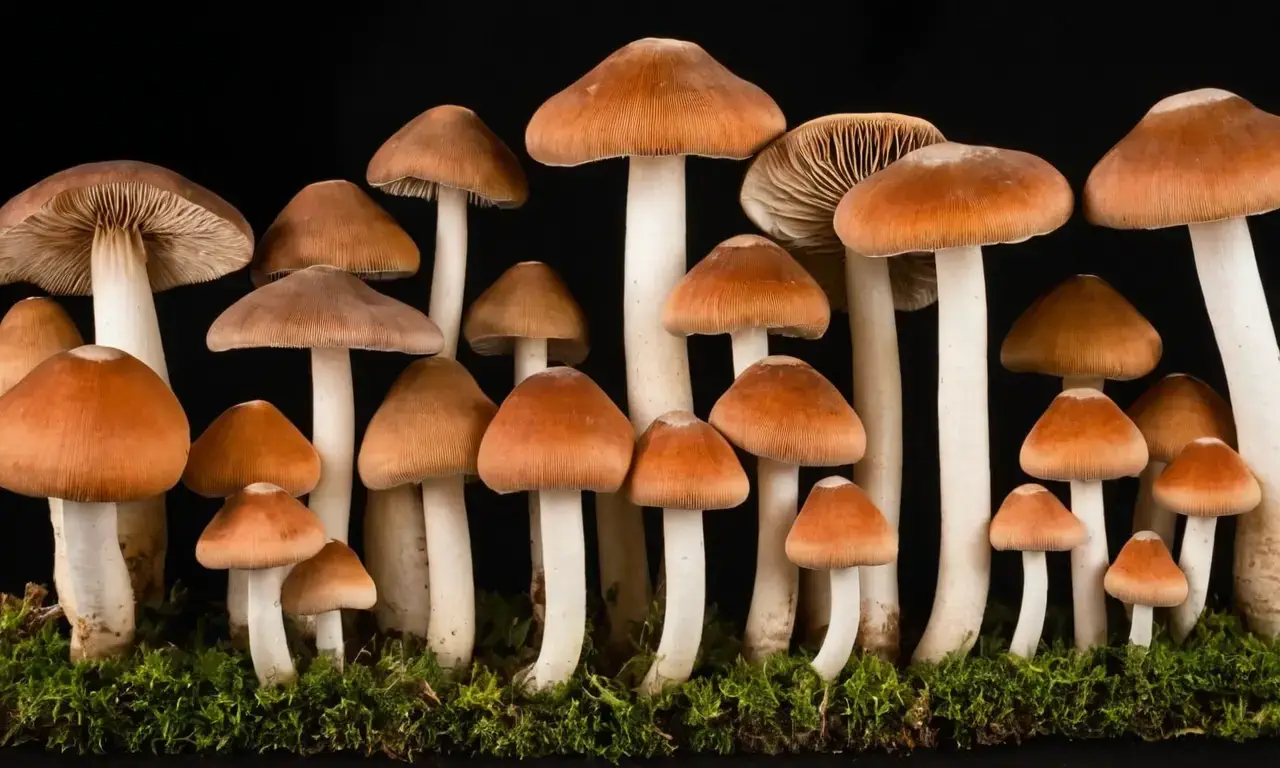
Mushroom Cultivation: History, Types, Nutrition & More

Mushroom cultivation has a rich history that spans centuries and continents. From its humble beginnings in France to its widespread popularity across North America, this fascinating process has evolved significantly over time. With approximately 10,000 species of mushrooms found in the United States alone, only about 250 are considered edible, making the art of mushroom cultivation both intriguing and challenging.
The objective of this article is to delve into the world of cool mushroom facts, exploring various aspects of mushroom cultivation, including its history, types, nutrition, and more. We will examine how mushrooms have been cultivated since the mid-17th century in France, their introduction to North America in the 19th century, and the vast array of edible varieties available today.
History
Mushroom cultivation has a long and storied past that dates back to ancient civilizations. In Europe, particularly in France, mushroom farming began in the mid-17th century. The French were instrumental in developing techniques for cultivating mushrooms on a large scale, which eventually led to their introduction to North America in the 19th century. This marked the beginning of a new era in mushroom cultivation, as farmers and enthusiasts alike sought to replicate the success they had achieved across the Atlantic.
The early days of mushroom farming were characterized by manual labor and primitive techniques. Farmers would often cultivate mushrooms in controlled environments such as greenhouses or specially designed facilities. The process was time-consuming and required great skill, but it laid the groundwork for modern mushroom cultivation methods that we see today. Over time, advancements in technology have streamlined the process, making it more efficient and accessible to a wider audience.
Types
Mushrooms are incredibly diverse, with over 10,000 species found in North America alone. Only about 250 of these varieties are considered edible, which presents both opportunities and challenges for mushroom farmers. The most commonly cultivated mushrooms include white agaricus (button), portobello, shiitake, oyster, and chanterelle. Each type has its unique characteristics, flavor profiles, and textures that make them appealing to consumers.
White agaricus, also known as button mushrooms, account for over 90% of mushroom sales in the United States. They are prized for their mild flavor and versatility in cooking. Portobello mushrooms, on the other hand, have a meatier texture and earthy flavor, making them a favorite among chefs. Shiitake mushrooms are highly valued for their rich, smoky taste and numerous health benefits. Oyster mushrooms offer a delicate flavor and soft texture, while chanterelle mushrooms are known for their fruity aroma and unique appearance.
Nutrition
Mushrooms are not only delicious but also packed with essential nutrients that make them an excellent addition to any diet. They are a rich source of B vitamins, copper, and selenium, which play critical roles in maintaining overall health. The umami flavor found in mushrooms is due to the presence of glutamates, which are naturally occurring amino acids.
The nutritional benefits of mushrooms extend beyond their flavor profile. Many varieties contain antioxidants that help protect against cell damage and inflammation. For instance, shiitake mushrooms have been shown to possess antiviral properties, making them a popular choice among those looking for natural remedies. The high fiber content in mushrooms also supports digestive health and can aid in weight management.
Cultivation Methods

Mushroom cultivation involves several steps that are crucial for the successful growth of these fungi. The process begins with spore collection or purchasing mushroom spawn from reputable suppliers. Spawn is essentially a mixture of mycelium (the vegetative part of a fungus) and a substrate, such as straw or compost, which serves as the foundation for mushroom growth.
Once the spawn has been prepared, it's time to inoculate the substrate. This involves placing the spawn into a controlled environment where the mushrooms can grow. The ideal temperature and humidity levels must be maintained throughout this process to ensure optimal growth. After several weeks of incubation, the mycelium will begin to break down the organic matter in the substrate, producing a nutrient-rich environment for the mushrooms to develop.
Edible vs. Poisonous
One of the most critical aspects of mushroom cultivation is distinguishing between edible and poisonous varieties. Many species of mushrooms can be mistaken for one another, leading to serious health risks if ingested. For example, the death cap (Amanita phalloides) is a highly toxic mushroom that resembles some edible varieties but should never be consumed.
Mushroom farmers must undergo extensive training to learn how to identify different species and ensure they are cultivating only safe and edible mushrooms. This requires a deep understanding of mycology, the study of fungi, as well as hands-on experience in the field. The consequences of misidentification can be severe, making it essential for mushroom enthusiasts to exercise caution when handling wild or cultivated mushrooms.
Spore Collection
Spore collection is an integral part of mushroom cultivation and involves gathering spores from mature mushrooms. This process allows farmers to create new spawn for future crops. There are several methods used for spore collection, including hand-picking individual spores with a sterile tool or using specialized equipment designed specifically for this purpose.
The collected spores can then be stored in a controlled environment until they are ready to be used for inoculation. This process is crucial because it allows farmers to maintain genetic diversity within their mushroom strains and ensures that the next generation of mushrooms will have the same desirable traits as the parent variety. Spore collection also enables the development of new, hybrid varieties with unique characteristics.
Farming Process
The farming process for mushrooms involves several stages, from preparation to harvesting. The first step is preparing the substrate, which can include straw, compost, or other organic materials. This material must be sterilized to prevent contamination and ensure that only the desired mycelium grows.
Once the substrate has been prepared, it's time to inoculate it with mushroom spawn. After several weeks of incubation, the mycelium will begin to break down the organic matter in the substrate, producing a nutrient-rich environment for the mushrooms to develop. The next stage involves maintaining optimal temperature and humidity levels to encourage healthy growth.
Harvesting Techniques
Harvesting techniques play a critical role in mushroom cultivation. Farmers must carefully monitor the development of their crops to ensure that they are harvested at the optimal time. Over-harvesting can lead to reduced yields, while under-harvesting may result in wasted potential.
There are several methods used for harvesting mushrooms, including hand-picking and mechanical harvesting. Hand-picking is often preferred for delicate varieties or when a high level of quality control is required. Mechanical harvesting involves using specialized equipment designed specifically for this purpose, which can be more efficient but requires careful calibration to avoid damaging the mushrooms.
Market Demand
Market demand for mushrooms has been steadily increasing over the years due to their nutritional benefits and versatility in cooking. Consumers are becoming more aware of the importance of incorporating fungi into their diets, driving up demand for a variety of mushroom types.
The rise of specialty grocery stores and farmers' markets has also contributed to this trend. These outlets often feature unique and exotic varieties that appeal to adventurous consumers looking to try new flavors and textures. As a result, mushroom farmers are finding it easier to sell their products directly to consumers or through local distributors, which can lead to higher profit margins.
Conclusion
Mushroom cultivation is a complex process that requires careful attention to detail and a deep understanding of mycology. From spore collection to harvesting techniques, each step plays a critical role in producing high-quality mushrooms. The nutritional benefits and versatility of these fungi make them an attractive choice for consumers, driving up market demand and creating opportunities for mushroom farmers.
As the world becomes increasingly aware of the importance of sustainable food systems, mushroom cultivation is likely to continue growing as a viable option for those looking to produce nutritious and delicious food while minimizing their environmental impact.
Leave a Reply





Related Links